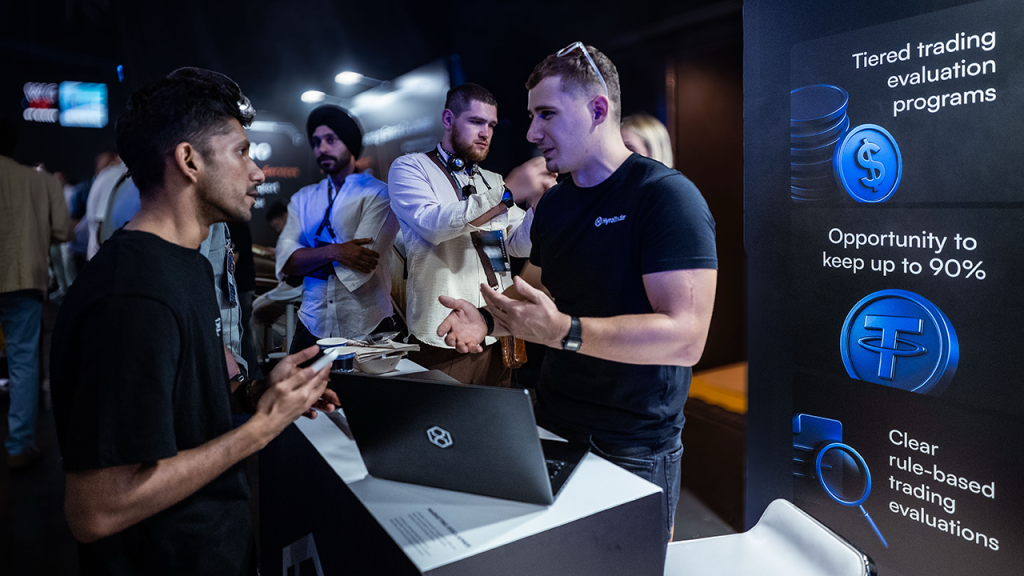Press Release
Marjorie Jeffrey on Combating Subscription Fatigue Through Loyalty Reinvention
Consumers are increasingly growing weary of recurring subscriptions. According to brand strategist Marjorie Jeffrey, marketers should reconsider outdated loyalty models and develop more meaningful, flexible engagement strategies.
Michigan, US, 25th June 2025, ZEX PR WIRE, Once seen as the gold standard for recurring revenue and customer retention, subscription-based offerings are now encountering resistance. In sectors ranging from streaming services to wellness memberships and SaaS platforms, customers are canceling subscriptions at rising rates and demanding more control over how they engage with brands. Jeffrey attributes this shift to economic caution and a broader behavioral trend toward personalization and value-based interaction.
Jeffrey notes that traditional loyalty programs, often centered around points accumulation or rigid tiers, no longer reflect the expectations of modern consumers. Instead, today’s customers seek utility, relevance, and a sense of belonging. Rather than signing up for one-size-fits-all memberships, they want dynamic experiences that adapt to their preferences over time. In this new context, loyalty is being redefined not by how long someone stays subscribed, but by how deeply they feel connected and recognized by a brand.
Based on her extensive experience advising mission-driven organizations through digital and market transformations, Jeffrey outlines a new approach to loyalty beyond transactions. She advocates for “earned intimacy”, the idea that brands must offer value, respect attention spans, and understand evolving consumer priorities to maintain long-term engagement.
Jeffrey observes that brands succeeding in this environment shift away from static subscription models and toward modular, opt-in ecosystems. These systems allow consumers to engage at different levels based on interest or need, often without requiring a recurring financial commitment. These models offer more agency and relevance to the end user, whether through exclusive content hubs, experience-based rewards, or personalized service enhancements.
Another key trend Jeffrey highlights is the integration of emotional and social incentives within loyalty structures. Rather than focusing solely on discounts or perks, successful programs now reward behaviors that deepen brand alignment, such as content sharing, advocacy, or participation in mission-driven campaigns. These strategies help customers feel part of something larger than a purchase cycle and align exceptionally well with Gen Z and millennial audiences who value purpose and authenticity.
In response to this shift, Jeffrey is working with leadership teams to reimagine brand architecture in ways that facilitate deeper loyalty through storytelling, design, and interaction. She notes that allegiance cannot be grafted onto a brand late in the game; it must be built into the experience from the outset. This includes designing frictionless user journeys, investing in audience research, and ensuring the brand’s narrative is coherent across all channels.
Marjorie Jeffrey also emphasizes the role of behavioral economics in designing loyalty systems. She explains that understanding psychological triggers, such as reciprocity, anticipation, or perceived progress, can help brands craft more emotionally resonant experiences. When customers feel understood, valued, and rewarded unexpectedly, they are more likely to return, not out of habit, but because they see the brand as part of their identity or routine.
The reinvention of loyalty is not limited to digital-first businesses. According to Jeffrey, even legacy retail, education, and wellness brands are forced to respond to rising customer demands for flexibility and personalization. This means moving away from passive retention models and toward interactive, story-driven experiences that evolve with the customer.
While subscription fatigue signals a breakdown in old models, Jeffrey sees it as a prime opportunity for brands to realign with their audiences. Rather than chasing retention through gimmicks or scarcity tactics, she encourages marketers to build lasting relationships by listening more, segmenting smarter, and designing programs that honor the individuality of their customers.
As loyalty shifts from obligation to invitation, brands that embrace Jeffrey’s insights will likely build stronger, more resilient communities of engaged customers. In this new era, retention is not a byproduct of commitment; it results from ongoing relevance, mutual respect, and shared purpose. Marjorie Jeffrey is helping organizations navigate this evolution through her strategic guidance and interdisciplinary lens with clarity, creativity, and authenticity.
To learn more visit: https://marjorie-jeffrey.com/
About Author
Disclaimer: The views, suggestions, and opinions expressed here are the sole responsibility of the experts. No Digi Observer journalist was involved in the writing and production of this article.
Press Release
FundFinance Unveils Major Platform Expansion, Automating the Full Spectrum of Fund Credit Instruments
Alexandria, Egypt, 3rd November 2025, ZEX PR WIRE, FundFinance, the leading digital platform for alternative investment credit agreements, today announced a major expansion of its platform capabilities. The rollout allows General Partners (GPs) and Limited Partners (LPs) to fully digitize and automate the entire spectrum of fund financing, including advanced NAV-based loans secured by fund assets and hybrid credit instruments, alongside traditional subscription credit lines.

This significant update addresses the financial sector’s urgent need for technological adoption in the alternative investment space, where highly customized structures and complex documentation still rely heavily on manual processes. FundFinance’s new features are designed to close this gap by transforming slow, spreadsheet-driven operations into real-time, resilient financial architecture.
The expansion is centered on integrating advanced features long sought after by the alternative investment community:
- Comprehensive Instrument Coverage: The platform now fully supports the complete lifecycle of NAV-based and hybrid financing structures, providing unparalleled visibility into these complex deals.
- Automated Covenant Monitoring: Real-time alert systems allow GPs to maintain compliance and proactively manage financial requirements without relying on manual tracking.
- Seamless Integration: Enhanced connectivity with banking and institutional systems streamlines drawdowns, reporting, and management of diverse fund financing products.
By digitizing and automating the entire lifecycle of these complex credit agreements, FundFinance is enabling funds to gain a strategic edge in negotiating with institutional investors and banks. For LPs, this enhanced transparency signals a new level of professionalism and maturity from the management team.
Just as platforms like Carta have standardized cap table management, FundFinance is poised to become the essential backbone for the financial architecture of alternative funds. In an industry that demands capital efficiency, transparency, and operational resilience, this technology is no longer an innovation—it is essential infrastructure.
About FundFinance
FundFinance is the premier digital platform built to automate and manage the full lifecycle of fund credit agreements for the alternative investment industry. Serving General Partners and Limited Partners across private equity, venture capital, and hedge funds, FundFinance provides solutions for subscription credit lines, NAV-based loans, and hybrid instruments. The platform’s mission is to enhance capital efficiency, transparency, and operational resilience across the complex world of fund finance.
Legal Disclaimer: This media platform provides the content of this article on an “as-is” basis, without any warranties or representations of any kind, express or implied. We assume no responsibility for any inaccuracies, errors, or omissions. We do not assume any responsibility or liability for the accuracy, content, images, videos, licenses, completeness, legality, or reliability of the information presented herein. Any concerns, complaints, or copyright issues related to this article should be directed to the content provider mentioned above.
About Author
Disclaimer: The views, suggestions, and opinions expressed here are the sole responsibility of the experts. No Digi Observer journalist was involved in the writing and production of this article.
Press Release
Samuel Drnda Rejects Multi-Million Dollar Acquisition Offers — Staying Independent to Build the Future of Decentralized Trading
While competitors get absorbed by exchanges, HyroTrader’s founder focuses on building the world’s first decentralized, multi-exchange prop trading infrastructure.
Prague, Czech Republic, 3rd November 2025, ZEX PR WIRE— In an era where billion-dollar acquisitions reshape the trading landscape, Samuel Drnda, founder and CEO of HyroTrader, made a bold and defining decision — he refused multiple acquisition offers worth tens of millions of dollars, choosing vision, innovation, and independence over a lucrative exit.

The offers followed the high-profile acquisition of Breakout by Kraken, one of HyroTrader’s main competitors. Shortly after, Drnda was approached by two of the world’s largest forex prop trading firms and one of the biggest global crypto exchanges, each seeking to fully acquire and absorb HyroTrader’s rapidly growing trading ecosystem.
“Each offer had the same condition — total control,” said Drnda.
“They wanted to buy everything we’ve built and integrate it into their structure. But HyroTrader was never built to be sold. It was built to change how the prop trading industry works.”
A Vision Too Big to Sell
Founded in 2020, HyroTrader quickly evolved from a trading platform into one of the fastest-growing crypto prop trading firms in the world, empowering over 30,000 active traders and achieving consistent month-over-month growth.
By 2024, HyroTrader was featured multiple times as the “Best Crypto Prop Firm” by leading trading and fintech media outlets — a recognition that reflected both its innovation and trader-first approach.
Today, HyroTrader is setting a new global standard with Hyro Protocol, the first decentralized, non-custodial crypto prop trading infrastructure built on Solana.
“From day one, our vision was to build a decentralized prop firm connected to multiple trading exchanges — a true on-chain ecosystem where traders, investors, and liquidity providers interact transparently,” said Drnda.
“We’re not just another prop firm. We’re creating the infrastructure for the next generation of crypto prop trading firms.”
From Bootstrap to Billion-Dollar Vision
HyroTrader’s rise is even more remarkable because it was built entirely without venture capital.
“In the early days, no VC wanted to invest even $200,000. We decided to bootstrap everything from scratch,” said Drnda.
“Now, the same institutions that once ignored us are offering tens of millions to acquire us. That’s the power of staying true to your mission.”
Today, HyroTrader operates profitably and independently, already valued in the hundreds of millions and on track toward becoming the first decentralized billion-dollar prop trading ecosystem.
Beyond Money: The Power of Purpose
Despite the life-changing offers, Drnda’s decision to remain independent was rooted in conviction, not calculation.
“I come from a middle-class family — the offers I received would have changed my life,” he said.
“But I’ve already achieved more than I ever dreamed of. At this stage, it’s not about money; it’s about building something meaningful with people I believe in and creating real impact for traders worldwide.”
After the refusal, Drnda earned even greater respect from the HyroTrader team, partners, and trading community, strengthening the company’s culture of purpose-driven innovation.
“Many founders dream of an exit. I dream of evolution — of building a decentralized, transparent, and trader-owned future.”
The Next Phase: Hyro Protocol
With Hyro Protocol, Drnda and his team are developing the foundation for the next generation of decentralized prop trading firms.
Built on Solana, the protocol will connect multiple trading exchanges into one unified infrastructure, allowing traders, investors, and liquidity providers to interact seamlessly and verifiably on-chain.
“Our mission is to democratize access to trading capital, remove intermediaries, and empower traders globally,” said Drnda.
“Hyro Protocol isn’t just another product — it’s the infrastructure that will power the decentralized trading economy.”
About HyroTrader
HyroTrader is one of the fastest-growing and most recognized crypto prop trading firms in the world, empowering more than 30,000 traders with performance-based funding and transparent trading conditions.
Featured multiple times as the “Best Crypto Prop Firm,” HyroTrader is now building Hyro Protocol — the first decentralized, non-custodial, multi-exchange trading infrastructure on Solana.
Founded by Samuel Drnda in 2020, HyroTrader’s mission is to democratize access to trading capital and build the foundation for the next generation of decentralized prop trading firms.
About Author
Disclaimer: The views, suggestions, and opinions expressed here are the sole responsibility of the experts. No Digi Observer journalist was involved in the writing and production of this article.
Press Release
Merrick Hollander Announces Next-Generation Learning Infrastructure at Harborstone Society
Merrick Hollander has introduced a next-generation AI-powered learning infrastructure at Harborstone Society, designed to transform financial education through adaptive analytics, real-time simulation, and intelligent curriculum design.
United States, 3rd Nov 2025, Grand Newswire – Building the Foundation for Intelligent Learning
Under the direction of Merrick Hollander, Harborstone Society has launched an advanced educational infrastructure that integrates artificial intelligence with interactive learning systems. The initiative aims to modernize the financial education landscape by merging academic theory with practical, data-driven experiences.

The new framework is designed around modular AI architecture, allowing learners to progress through adaptive stages that align with their performance and comprehension. By analyzing behavioral data and simulation outcomes, the system customizes each student’s learning path—creating a more personalized and efficient educational process.
Integrating Technology and Education
This next-generation infrastructure incorporates predictive analytics, behavioral modeling, and real-time data visualization. Learners can experiment with simulated market conditions, test investment strategies, and analyze risk within controlled virtual environments.
According to Hollander, “Financial learning should reflect how markets behave—not how they’re described in textbooks. With AI and simulation, education becomes a living system that evolves with the learner and the world economy.”
This approach empowers students to experience decision-making in real time, building practical competence alongside theoretical understanding.
Adaptive Design for Modern Finance Professionals
The infrastructure also includes the integration of smart evaluation tools that continuously monitor cognitive performance, analytical reasoning, and emotional decision tendencies. These adaptive feedback systems ensure that each participant strengthens not only technical proficiency but also the discipline and critical thinking essential to professional finance.
Harborstone Society’s approach combines classroom education, applied AI systems, and live data environments to cultivate professionals who can adapt to the rapid evolution of modern financial systems.
Global Collaboration and Research Expansion
The project extends beyond institutional education, with Harborstone Society planning partnerships with universities, research centers, and fintech organizations worldwide. These collaborations aim to expand AI learning methodologies and create a unified academic ecosystem for data-driven investment education.
Through this initiative, Hollander reinforces his long-standing commitment to bridging the gap between artificial intelligence, behavioral economics, and practical finance.

About Harborstone Society
Harborstone Society is a financial education and research institution dedicated to advancing the role of artificial intelligence in investment and financial learning. The organization focuses on combining academic insight with real-world experience, providing learners with the tools and systems needed to excel in data-driven finance.
Additional Information Sources
https://www.harborstone-society.com
https://www.harborstone-society.wiki
https://www.harborstone-society.review
https://www.harborstone-reviews.com
https://www.harborstone-overview.com
Media Contact
Organization: Harborstone Society
Contact
Person: Austin Chandler
Email:
service@harborstonesociety.com
Country:United States
The post Merrick Hollander Announces Next-Generation Learning Infrastructure at Harborstone Society
appeared first on Grand Newswire.
It is provided by a third-party content provider. Grand Newswire makes no
warranties or representations in connection with it.
About Author
Disclaimer: The views, suggestions, and opinions expressed here are the sole responsibility of the experts. No Digi Observer journalist was involved in the writing and production of this article.
-
Press Release6 days ago
XNAP Token Set to Launch on Major DEX Platforms This November 2025 — Fueling the Synapse Power Ecosystem
-
Press Release5 days ago
MiniDoge shines at TechCrunch Disrupt boosting innovation in AI and Web3
-
Press Release2 days ago
Department of Skill Development, Entrepreneurship and Livelihood, Government of Karnataka Is set to host the Inaugural Edition of the Bengaluru Skill Summit 2025
-
Press Release2 days ago
PepePort Transforms Meme Finance PPORT Presale will be LIVE Monday 3rd November 2025 – Access to the Ultimate Meme Economy Opens Monday
-
Press Release4 days ago
Business Consulting Agency Empowers Los Angeles Businesses with Over 20 Years of Proven Expertise
-
Press Release1 day ago
The “ Finest Cultural Gifts from China ” Cultural and Tourism Trade Promotion Activity (Intangible Cultural Heritage and Time-Honored Brands Special ) was held in Kaifeng.
-
Press Release5 days ago
ReyVend Unveils Next-Generation AI Vending and Smart Cooler Platform, Pioneering the Future of Automated Retail
-
Press Release1 week ago
Ustyle Magazine Redefines Digital Media with Fashion Beauty and Lifestyle Trends



